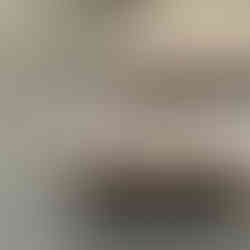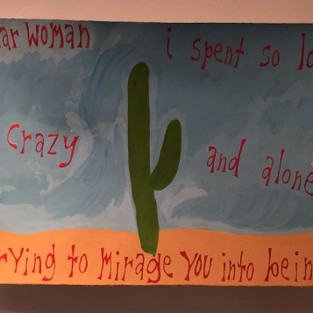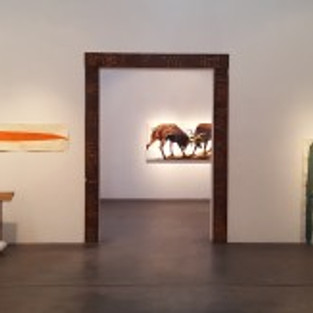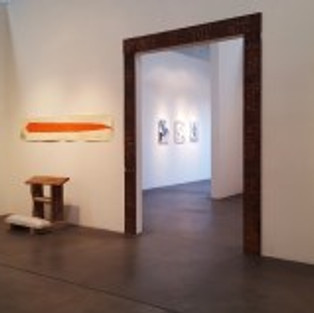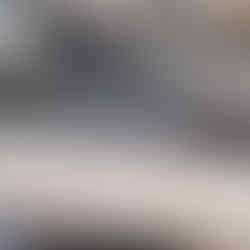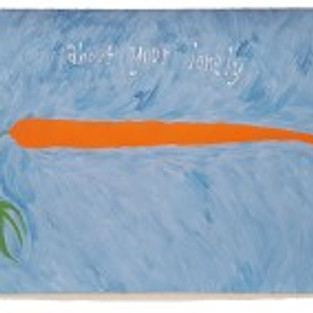
Installation View. Michael Deyermond: This is my heart, please don’t use it against me. Craig Krull Gallery. Photo Credit Shana Nys Dambrot.
Michael Deyermond:
This is my heart, please don’t use it against me
Craig Krull Gallery, Bergamot Station
By Shana Nys Dambrot
Through April 8th
A cactus, a carrot, a can of beans, a kneeler for praying. Inscribed confessions, the same as poems, in language both drawn and written and for the same purpose. A lectern and prie-dieux carved from the wood of a fallen windmill on the ranch property where Michael Deyermond went for most of last year, to try to get clear and figure some shit out. Along with a population of watchful, judgemental, spirited old cacti and the ghosts of untold cowboys, hobos, settlers, outlaws, First Nation warriors, and later, of course, the sparse, sparkling traces of painters, poets, and scraggy shamans. He went there to get away, and also because in order to come back, he needed an away place to come back from. This is my heart, please don’t use it against me shows sculptures and works on paper he made at and about the ranch; they are the literal artifacts and outgrowths of this particular visionquest. In the case of the sculptures, the work is literally built from materials he found on site, the wood of a fallen windmill. Maybe Don Quixote finally slew his foe. That would explain a lot actually. For example the raw emotional power in even the shortest of the writings, and the breathless narrative arc like Joyce kissing Kerouac by the campfire that plays out in the longer piece. Because Michael Deyermond is first and foremost a writer, and not only all the work but indeed the entire leitmotif of the installation design, is built around the words he wrote on sojourn.

Please Don’t Use It Against Me, 2016 gouache on paper 8 x 11” . Michael Deyermond: This is my heart, please don’t use it against me. Craig Krull Gallery. Photo Courtesy of Craig Krull Gallery.
There’s a rough, gruff, grateful fatalism to his words, rendered in gouache on paper in a flouncy hand, folksy line, and tertiary palette with passages of color-blocking that split the difference between abstraction, graffiti, and classic Pop. A series of such works are hung around the room at the heights of a craggy horizon line, with floating works about grounded cactuses, rendered with the stance of full-length portraiture, and seeming to speak. “What I learned in solitude,” “Don’t mistake me for someone with strategy,” “Alone loving you,” “Here I am,” and the eponymous “This is my heart, please don’t use it against me.” The most poignant pieces of writing are carved into the weather-worn, splintered wooden plinths of the windmill’s bones, refashioned by the artist into a series of prayer benches, each one of which bears an inscription. Arranged in a loose arc around a makeshift pulpit, each one begins “I sat here and…” followed by series of confessional micro-stories with a Hemingway-esque gift for evocative brevity. “I sat here and…waited for you,” “…wanted to kill myself again,” “…art took my life,” “…cried,” “…almost gave up,” “…I won.”
In a way the exhibition can be read as a book in fine art form, a story so archetypal that its contours can exist as simple, familiar trigger images in schematic paintings and sculptures, and only the small tender heartbreaks of the one man remain to be described in more detail. As a setting and set-up for classical cowboy poetry and first-person growing pains, one could hardly do better. It’s the perfect vehicle for Deyermond’s singular, tersely profound and darkly witty voice to express itself in his trademark hybrid fashion, as arts and letters work together in an inseparable partnership. Both the rural ranch and the urban gallery are thereby made into the perfect places to pray, tilt at windmills, and howl at the moon.
#losangeles #losangelesartist #pleasedontuseitagainstme #santamonica #art #painting #MichaelDeyermond #onlineartmagazine #losangelesart #contemporaryart #southerncalifornia #craigkrull #artgallery #gallery #shananysdambrot #artandcake #artexhibition #installation #ArtandCakeLA #fineart #artists #artist #soloshow #CraigKrullGallery #mixedmedia #artsmagazine #arts #environment #artreview #sculpture #artexhibit #ArtandCulture #exhibition #bergamotstation #Thisismyheart #exhibit #losangelesgallery #drawing

